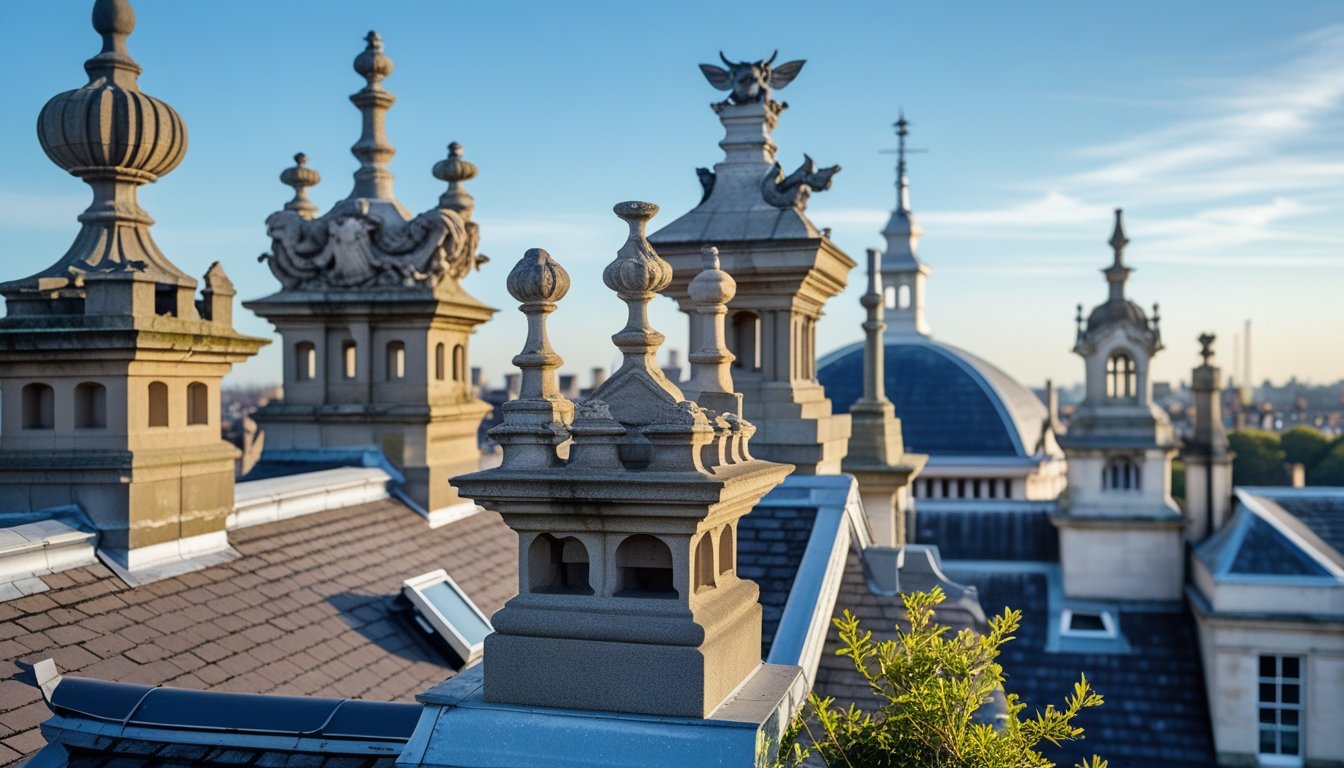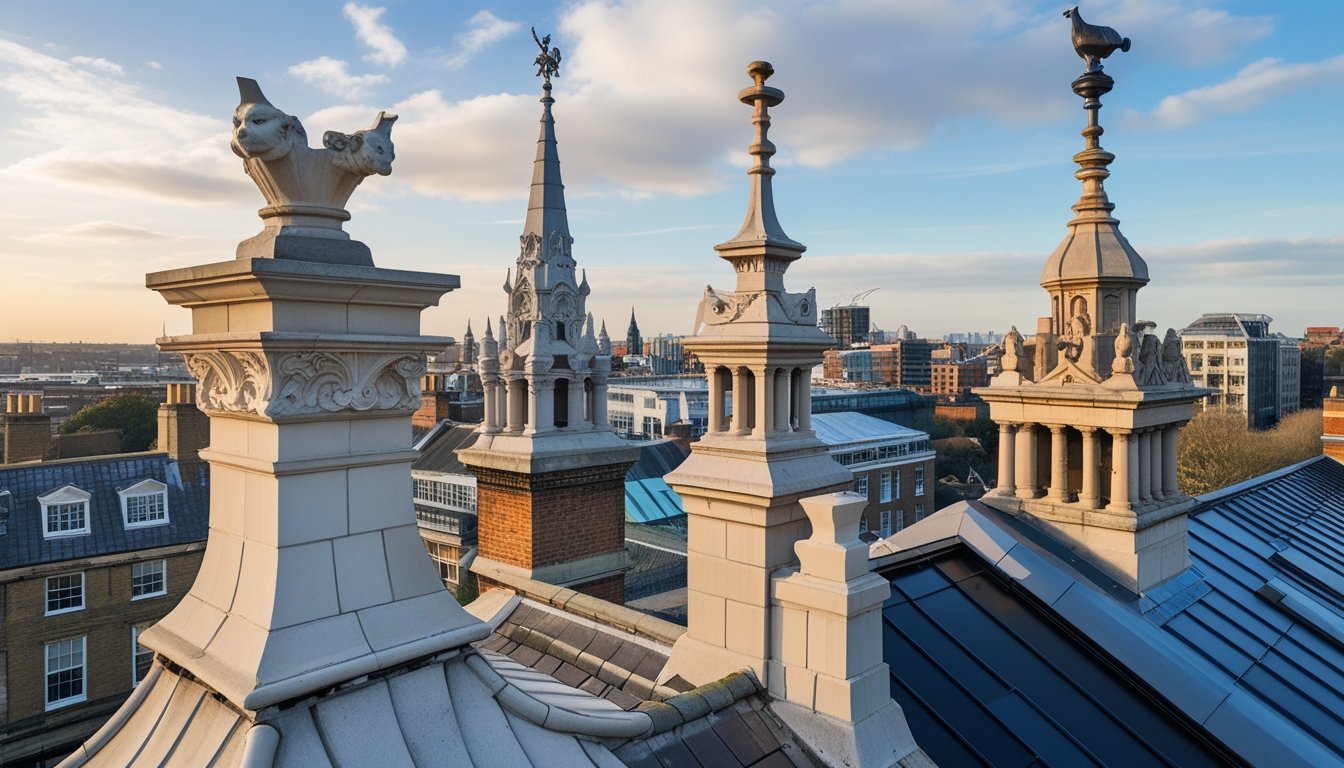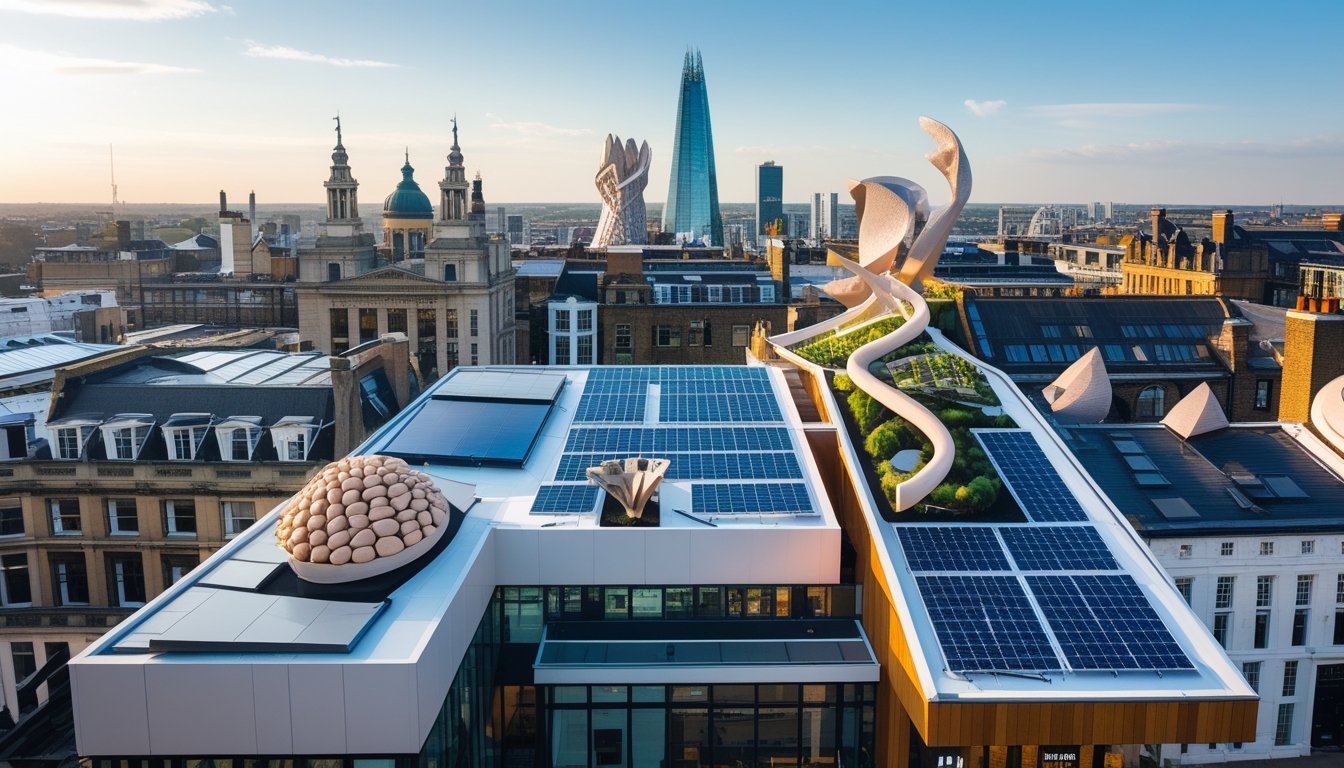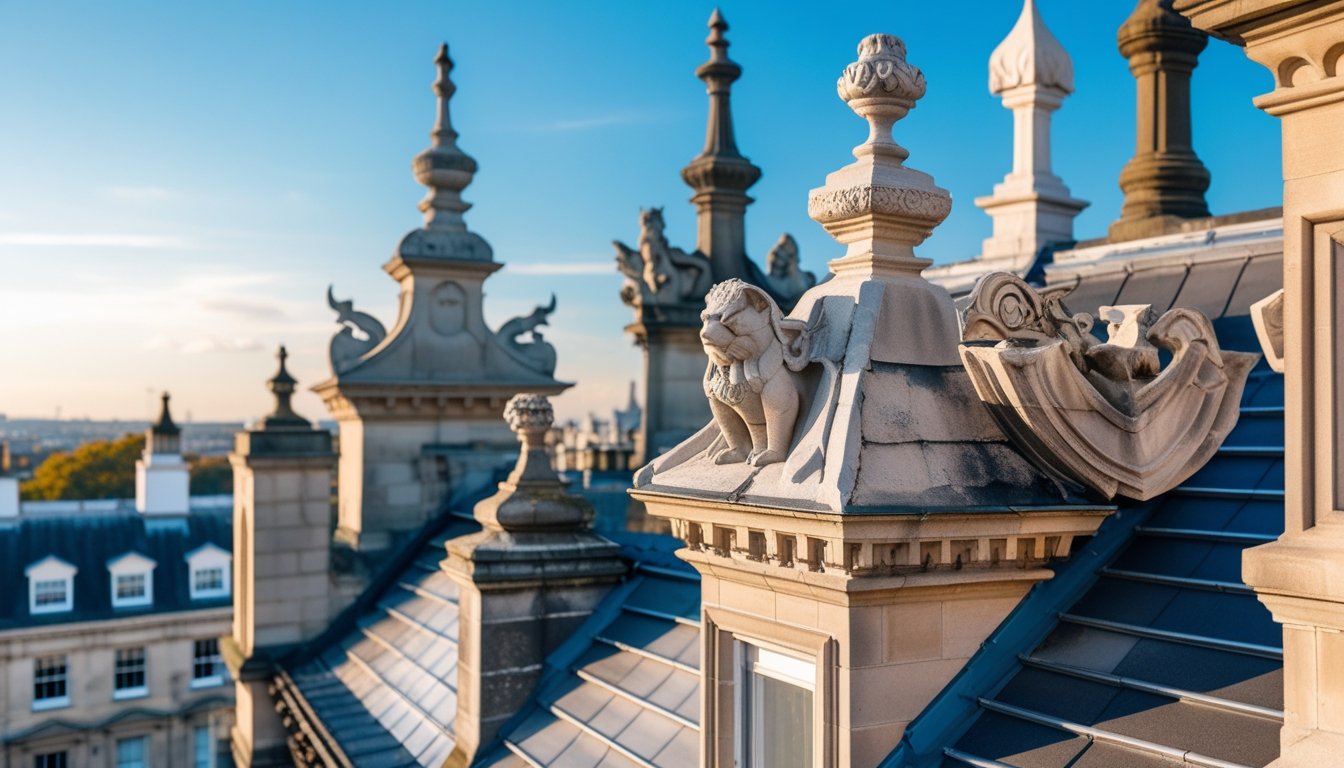Late updated: 14 May 2025 16:05
Written by: Oliver Bennett
Exploring Architectural Roof Sculptures in the UK: A Journey Through History and Design
Architectural roof sculptures in the UK offer a fascinating glimpse into history and artistic evolution. They span from the elegant finials gracing classic Victorian homes to striking contemporary installations. These ornaments not only elevate the aesthetic appeal of a building but also reflect cultural shifts and technological advancements. Their presence continuously enhances the cityscape, blending historical craftsmanship with modern architectural design.

One cannot discuss architectural roof sculptures without mentioning Antony Gormley's innovative rooftop sculptures. His work in public spaces redefines how we interact with art and architecture. Influences from historical roof embellishments like concrete and clay finials have paved the way for these modern expressions, showing a progression from traditional ornamentation to contemporary statement pieces.
For those keen to explore firsthand, self-guided tours such as those at the Royal Institute of British Architects in London offer insights into the craftsmen and designers behind these fascinating roof structures. They invite us into a journey where art meets architecture, stimulating both our imagination and curiosity about past and present innovations.
Key Takeaways
- Roof sculptures in the UK embody historical elegance and modern innovation.
- Notable sculptors like Antony Gormley have transformed public art on rooftops.
- Guided architecture tours offer insights into notable roof sculptures.
The Evolution of Architectural Roof Sculptures in the UK

Architectural roof sculptures in the UK embody a rich tapestry of history and creativity. From medieval roofs adorned with carved angels to modern installations that redefine public spaces, these sculptures reflect cultural shifts and artistic movements.
Historical Context and Influences
The origins of architectural roof sculptures in the UK can be traced back to medieval churches, where elaborate stone carvings and wooden angels embellished church roofs. These intricate designs often aimed to enhance the spiritual experience of worshippers. As styles evolved, the art of roof sculpture became more expressive, aligning with architectural developments during the Gothic and Renaissance eras. The influence of these periods is visible in the ornate details and thematic elements that defined much of British ecclesiastical architecture.
The industrial revolution brought about a significant shift. With new materials and techniques, roof sculptures started incorporating cast iron and other metals, allowing for more detailed and grandiose designs. This period also saw a blend of classical motifs and innovative styles as architects experimented with new ideas.
Iconic Roof Sculptures in London
London is a hub of architectural innovation and hosts some of the UK's most iconic roof sculptures. One noteworthy example is the British Museum, where the building itself is adorned with classical architectural elements that echo historical design. The capital city showcases a juxtaposition of old and new, with modern buildings featuring avant-garde sculptures made by contemporary artists such as Anish Kapoor.
In more recent times, structures like the Lloyd’s Building highlight the integration of modern architectural elements with innovative design. London’s skyline boasts a unique fusion of historical grandeur and modern daring, reflecting the city's dynamic architectural narrative.
Role of Renowned Architects and Artists
Renowned architects and artists have played a pivotal role in shaping the trajectory of roof sculptures. Figures like Zaha Hadid brought a futuristic vision to architecture, influencing the design and execution of structures that incorporate artistic roof elements. Similarly, Anish Kapoor’s work with reflective surfaces adds a dimension to the urban landscape, blurring the lines between art and architecture.
Collaborations between artists and architects, such as those with Cecil Balmond, have birthed imaginative constructions that challenge traditional boundaries. This synergy has fostered a landscape where roof sculptures are not merely decorative but integral to the architectural statement, pushing the envelope of what's possible in urban environments.
Notable Roof Sculptures and Modern Innovations

In the landscape of British architecture, roof sculptures and the integration of modern design continue to captivate. Innovative art installations, urban regeneration, and the seamless blend of nature and man-made structures in urban settings highlight the diversity and creativity of this architectural niche.
The Serpentine Gallery and Contemporary Art Installations
The Serpentine Gallery in London is a beacon for innovative architectural art. Each year, the gallery commissions a temporary summer pavilion showcasing contemporary architectural designs. These pavilions often feature striking roof sculptures that experiment with materials and forms.
Notable installations have included mesmerising light reflections and dynamic shapes that challenge conventional building structures. These temporary structures serve as a playground for architects like Bjarke Ingels and Frank Gehry, who have transformed the space into an arena for architectural discourse and innovation. Remarkably, these installations attract both art and architecture enthusiasts, highlighting London's position as a centre for global architectural experimentation.
Sculptural Forms in Stratford and Urban Regeneration
Stratford's urban landscape embodies the transformative power of architecture and art. The regeneration of this area, particularly following the 2012 London Olympics, introduced sculptural creations that blend functionality with aesthetic ambition. The ArcelorMittal Orbit, an observation tower designed by Anish Kapoor, stands out with its twisted red steel form that dominates the skyline. It encapsulates the spirit of renewal and creativity, offering visitors panoramic views of London.
This sculptural landmark has become an icon, representing Stratford's journey from industrial past to vibrant future. These efforts in Stratford demonstrate how artistic innovation in architecture can revitalise entire neighbourhoods, contributing to community identity and urban vitality.
Kensington Gardens: Blending Nature and Architecture
Kensington Gardens, home to a harmonious blend of art and nature, includes sculptural works that complement its lush landscape. Here, the Albert Memorial offers an iconic representation of Victorian architecture. It stands boldly with sculptural elements that fuse Gothic and classical influences.
In recent years, modern architectural interventions have respected this harmony. The Serpentine Pavilion Series often explores themes tied to nature, with designs that mimic organic forms or use reflective materials to integrate with the environment. These pavilions demonstrate an innovative dialogue between art, architecture, and the natural world, enriching the visitor experience within one of London's most cherished green spaces.
Frequently Asked Questions

Architectural roof sculptures in the UK add a unique element to buildings, melding artistic design with architecture. These features can be found on notable structures and in outdoor sculpture parks across the nation, offering cultural and historical insights.
What are the typical names for statues found on building roofs?
Statues on building roofs can be referred to as finials, pinnacles, or gargoyles, each serving a distinct architectural purpose. They contribute not only to the aesthetics but also to the structural balance of the roofs.
Which famous roof sculptures are notable in UK architecture?
In the UK, you can admire the ornate statues on the roof of St. Pancras Renaissance Hotel in London and the impressive statues of the Victoria and Albert Museum. Both sites boast significant sculptural elements that attract many visitors.
What term describes sculptures that are integrated into building structures?
The term "architectural sculpture" is used to describe sculptures that are integrated into buildings. These pieces not only embellish the structure but are also thoughtfully incorporated into the architectural design.
How are statues considered a part of architectural designs?
Statues enhance architectural designs by providing focal points and visual interest. They often carry cultural or historical significance and can represent mythological, religious, or historical figures.
Can you list some prominent outdoor sculpture parks in the UK?
Yorkshire Sculpture Park and Cass Sculpture Foundation are well-known for showcasing contemporary works in natural settings. These parks allow visitors to engage with large-scale sculptures outside traditional gallery spaces.
Where can I find the Longside Gallery and what does it exhibit?
Located within the Yorkshire Sculpture Park, the Longside Gallery hosts diverse exhibitions, featuring both contemporary and modern sculptures. It offers a dynamic program that invites dialogue between artists and the public.
